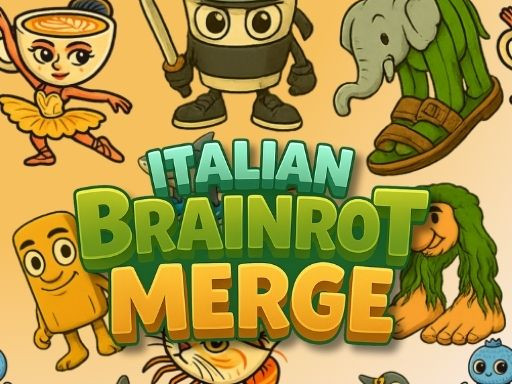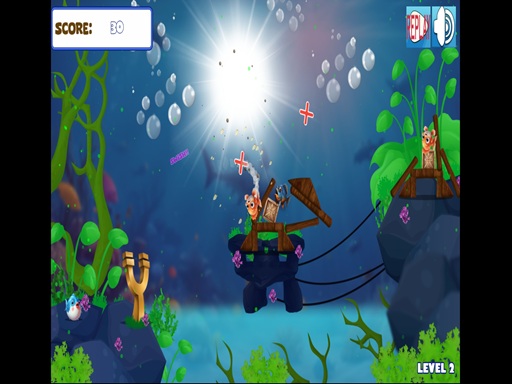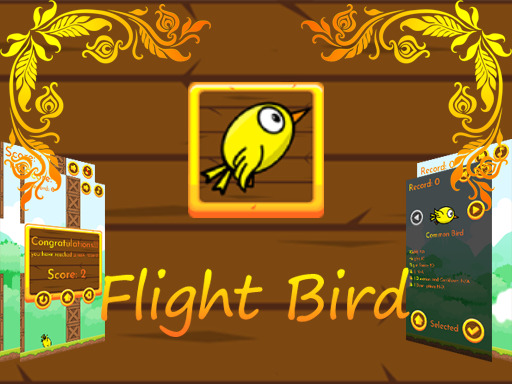Line Flow
About Line Flow
Okay, so listen, I’ve gotta tell you about this game. You know how sometimes you’re just scrolling through app stores, or maybe a friend mentions something, and you think, "Eh, probably just another one of *those*," but then it just… clicks? Like, it utterly blindsides you with how good it is? That’s exactly what happened to me with this game. I’ve been calling it ‘Line Flow’ in my head, because that’s precisely what it feels like, what it *is*.
I mean, honestly, for a long time, my gaming life was all about the epic stuff, right? Huge open worlds, sprawling narratives, competitive online battles where every pixel matters. And don't get me wrong, I still adore those experiences. There's nothing quite like the rush of a perfect drift around a corner in a racing game, or that moment when a strategy finally clicks into place after hours of trial and error in an RTS. But lately, I’ve found myself craving something different, something that scratches a different kind of itch. Something that respects my time, but also truly engages my brain without demanding a twenty-hour commitment just to understand the tutorial. And that’s where Line Flow just… slid right in.
The first time I saw it, I was skeptical. It looked so… simple. Almost deceptively so. The premise, if you can even call it that, is disarmingly straightforward: you have a shape, or a series of dots, and your job is to connect them all with a single, unbroken line. No lifting your finger, no retracing your steps. That’s it. Sounds easy, right? That’s what I thought too. I figured it would be a five-minute distraction, something to idly tap at while waiting for coffee. But oh, how wrong I was.
What I love about games like this is how they gently lull you into a false sense of security before revealing their true depth. The initial levels of Line Flow are pure, unadulterated zen. You’re presented with these elegant, minimalist shapes, and you just glide your finger across the screen. There’s something incredibly satisfying about the smooth, almost buttery feel of the line unfurling behind your touch. You can almost feel the gentle resistance of the glass, the subtle haptic feedback from your device as the line snaps into place. It’s like a digital meditation. The soft, ambient music that accompanies it is just perfect – it’s there, but it never intrudes, just a gentle hum that melts into the background, letting your mind truly focus on the task at hand. You find yourself just breathing, watching the line grow, connecting the dots, filling the space. It’s a pure, almost childlike joy. That feeling of effortless creation, of bringing something complete into existence with a single, flowing motion… it’s genuinely magical.
But then, slowly, almost imperceptibly, the game starts to introduce its clever little twists. Suddenly, the shapes aren't just simple squares or circles. They become more intricate, more labyrinthine. You encounter dead ends, pathways that seem to lead nowhere, and you realize, "Oh, wait. I can't just go *anywhere*." The constraint of the single, unbroken line, the 'no retracing' rule, which initially felt like a minor detail, suddenly becomes the entire puzzle. And that’s when the real magic happens.
You’ll find yourself staring at a seemingly impossible configuration, your finger hovering over the screen, tracing imaginary paths. You’ll try one route, get halfway through, and then realize you’ve boxed yourself into a corner, leaving a single, isolated dot unreachable. And that’s when the frustration creeps in, just a tiny prickle, enough to make the eventual breakthrough feel all the sweeter. You’ll hit the reset button, maybe with a sigh, and start over. And again. And again. You’ll try starting from a different corner, or maybe you’ll focus on connecting the most isolated dots first. You’ll experiment. And then, suddenly, it clicks.
It’s that moment, that glorious, incandescent flash of insight, when the entire solution unfolds in your mind’s eye before you even touch the screen. You see the elegant, serpentine path that connects every single point, every single corner, without ever crossing itself or getting stuck. The tension in your shoulders, which you didn't even realize was there, just melts away. And then, with a confident swipe, you execute the perfect flow. The line glows, maybe a little chime sounds, and the entire shape illuminates, a testament to your mental agility. That feeling of satisfaction, that quiet triumph, it’s just *chef's kiss*. It’s the same kind of feeling you get when you finally solve a ridiculously complex Sudoku, or when you perfectly execute a combo in a fighting game after hours of practice – but it’s distilled, pure, and incredibly accessible.
What's fascinating is how the game manages to maintain this delicate balance between relaxation and challenge. You can just pick it up for a few minutes and get that meditative calm from the simpler levels, or you can dive deep into the more complex puzzles and truly challenge your spatial reasoning. The brilliant thing about this is that it never feels punishing. There’s no timer, no scoreboards (unless you want them, in certain modes), no pressure. It’s just you, the puzzle, and the satisfying act of drawing. It’s a game that respects your intelligence and your time.
And the sheer volume of content! Just wait until you encounter the levels that introduce new elements, like portals that transport your line, or areas you can only pass through once. It keeps the core mechanic fresh and constantly evolving. It makes me wonder how many ways they can twist such a simple premise, and every time, they manage to surprise me with a new layer of complexity. It’s not about brute force; it’s about elegant solutions. It’s about seeing the whole picture, not just the individual parts.
In my experience, the best moments come when you get into that "flow state" yourself. You’re not just playing the game; you’re *in* it. Your finger becomes an extension of your thought, the line a visible representation of your mental journey. You start to anticipate the patterns, to intuitively grasp the underlying logic of the puzzles. You can almost feel your brain working, stretching, adapting. It’s a truly unique sensation, and it’s something I’ve always been drawn to in games – that feeling of becoming one with the challenge, where the boundaries between player and game dissolve.
Honestly, Line Flow isn't just a game; it's a mental workout disguised as a soothing pastime. It’s the perfect palate cleanser after a stressful day, or a wonderful way to kickstart your brain in the morning. It reminds me that sometimes, the most profound experiences come from the simplest ideas, executed with elegance and a deep understanding of what makes a puzzle truly engaging. It’s not flashy, it doesn’t have explosions or dragons, but it has something far more valuable: a quiet, persistent charm that keeps you coming back, level after level, just for that pure, unadulterated satisfaction of seeing the line connect, of completing the picture, of achieving that perfect flow. You really, really need to try it.
I mean, honestly, for a long time, my gaming life was all about the epic stuff, right? Huge open worlds, sprawling narratives, competitive online battles where every pixel matters. And don't get me wrong, I still adore those experiences. There's nothing quite like the rush of a perfect drift around a corner in a racing game, or that moment when a strategy finally clicks into place after hours of trial and error in an RTS. But lately, I’ve found myself craving something different, something that scratches a different kind of itch. Something that respects my time, but also truly engages my brain without demanding a twenty-hour commitment just to understand the tutorial. And that’s where Line Flow just… slid right in.
The first time I saw it, I was skeptical. It looked so… simple. Almost deceptively so. The premise, if you can even call it that, is disarmingly straightforward: you have a shape, or a series of dots, and your job is to connect them all with a single, unbroken line. No lifting your finger, no retracing your steps. That’s it. Sounds easy, right? That’s what I thought too. I figured it would be a five-minute distraction, something to idly tap at while waiting for coffee. But oh, how wrong I was.
What I love about games like this is how they gently lull you into a false sense of security before revealing their true depth. The initial levels of Line Flow are pure, unadulterated zen. You’re presented with these elegant, minimalist shapes, and you just glide your finger across the screen. There’s something incredibly satisfying about the smooth, almost buttery feel of the line unfurling behind your touch. You can almost feel the gentle resistance of the glass, the subtle haptic feedback from your device as the line snaps into place. It’s like a digital meditation. The soft, ambient music that accompanies it is just perfect – it’s there, but it never intrudes, just a gentle hum that melts into the background, letting your mind truly focus on the task at hand. You find yourself just breathing, watching the line grow, connecting the dots, filling the space. It’s a pure, almost childlike joy. That feeling of effortless creation, of bringing something complete into existence with a single, flowing motion… it’s genuinely magical.
But then, slowly, almost imperceptibly, the game starts to introduce its clever little twists. Suddenly, the shapes aren't just simple squares or circles. They become more intricate, more labyrinthine. You encounter dead ends, pathways that seem to lead nowhere, and you realize, "Oh, wait. I can't just go *anywhere*." The constraint of the single, unbroken line, the 'no retracing' rule, which initially felt like a minor detail, suddenly becomes the entire puzzle. And that’s when the real magic happens.
You’ll find yourself staring at a seemingly impossible configuration, your finger hovering over the screen, tracing imaginary paths. You’ll try one route, get halfway through, and then realize you’ve boxed yourself into a corner, leaving a single, isolated dot unreachable. And that’s when the frustration creeps in, just a tiny prickle, enough to make the eventual breakthrough feel all the sweeter. You’ll hit the reset button, maybe with a sigh, and start over. And again. And again. You’ll try starting from a different corner, or maybe you’ll focus on connecting the most isolated dots first. You’ll experiment. And then, suddenly, it clicks.
It’s that moment, that glorious, incandescent flash of insight, when the entire solution unfolds in your mind’s eye before you even touch the screen. You see the elegant, serpentine path that connects every single point, every single corner, without ever crossing itself or getting stuck. The tension in your shoulders, which you didn't even realize was there, just melts away. And then, with a confident swipe, you execute the perfect flow. The line glows, maybe a little chime sounds, and the entire shape illuminates, a testament to your mental agility. That feeling of satisfaction, that quiet triumph, it’s just *chef's kiss*. It’s the same kind of feeling you get when you finally solve a ridiculously complex Sudoku, or when you perfectly execute a combo in a fighting game after hours of practice – but it’s distilled, pure, and incredibly accessible.
What's fascinating is how the game manages to maintain this delicate balance between relaxation and challenge. You can just pick it up for a few minutes and get that meditative calm from the simpler levels, or you can dive deep into the more complex puzzles and truly challenge your spatial reasoning. The brilliant thing about this is that it never feels punishing. There’s no timer, no scoreboards (unless you want them, in certain modes), no pressure. It’s just you, the puzzle, and the satisfying act of drawing. It’s a game that respects your intelligence and your time.
And the sheer volume of content! Just wait until you encounter the levels that introduce new elements, like portals that transport your line, or areas you can only pass through once. It keeps the core mechanic fresh and constantly evolving. It makes me wonder how many ways they can twist such a simple premise, and every time, they manage to surprise me with a new layer of complexity. It’s not about brute force; it’s about elegant solutions. It’s about seeing the whole picture, not just the individual parts.
In my experience, the best moments come when you get into that "flow state" yourself. You’re not just playing the game; you’re *in* it. Your finger becomes an extension of your thought, the line a visible representation of your mental journey. You start to anticipate the patterns, to intuitively grasp the underlying logic of the puzzles. You can almost feel your brain working, stretching, adapting. It’s a truly unique sensation, and it’s something I’ve always been drawn to in games – that feeling of becoming one with the challenge, where the boundaries between player and game dissolve.
Honestly, Line Flow isn't just a game; it's a mental workout disguised as a soothing pastime. It’s the perfect palate cleanser after a stressful day, or a wonderful way to kickstart your brain in the morning. It reminds me that sometimes, the most profound experiences come from the simplest ideas, executed with elegance and a deep understanding of what makes a puzzle truly engaging. It’s not flashy, it doesn’t have explosions or dragons, but it has something far more valuable: a quiet, persistent charm that keeps you coming back, level after level, just for that pure, unadulterated satisfaction of seeing the line connect, of completing the picture, of achieving that perfect flow. You really, really need to try it.
Enjoy playing Line Flow online for free on 2mca Games. This Arcade game offers amazing gameplay and stunning graphics. No downloads required, play directly in your browser!
How to Play
Through the easy one line drawing gameplay you can relax your stress and experience a relaxing and enjoyable game time





Comments
This game is awesome! I love the graphics and gameplay.
One of the best games I've played recently. Highly recommended!